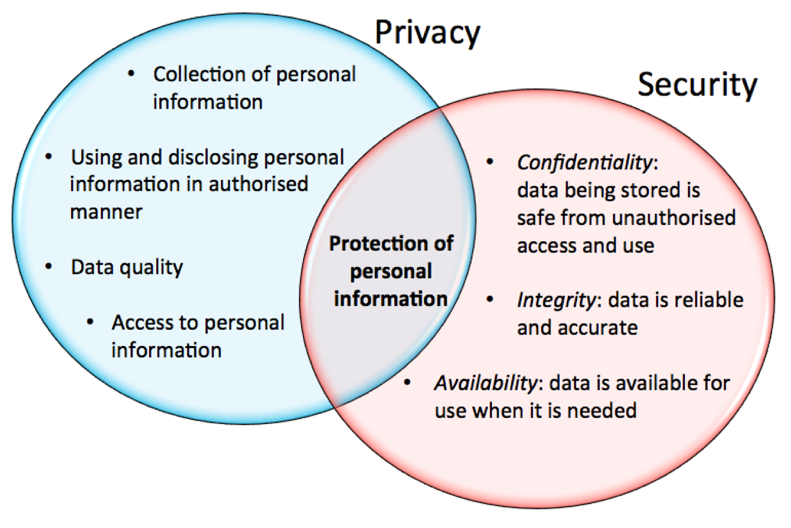Fiber Network Security: Essential Tools to Safeguard Your Network’s Integrity
Fiber Network Security: Essential Tools to Safeguard Your Network’s Integrity
Blog Article
Just How Information and Network Security Secures Against Emerging Cyber Threats
In an age marked by the rapid development of cyber hazards, the significance of data and network safety has never ever been more pronounced. As these risks end up being a lot more complicated, understanding the interplay in between data security and network defenses is vital for reducing threats.
Comprehending Cyber Risks

The ever-evolving nature of technology consistently presents new vulnerabilities, making it essential for stakeholders to continue to be vigilant. Individuals may unwittingly succumb social design tactics, where assaulters adjust them into disclosing sensitive information. Organizations face one-of-a-kind obstacles, as cybercriminals frequently target them to make use of beneficial information or interfere with operations.
Moreover, the increase of the Web of Things (IoT) has increased the attack surface area, as interconnected devices can serve as access factors for enemies. Acknowledging the value of durable cybersecurity practices is essential for alleviating these threats. By cultivating a thorough understanding of cyber threats, individuals and organizations can apply effective methods to secure their electronic properties, guaranteeing resilience despite a progressively complicated hazard landscape.
Secret Parts of Information Safety And Security
Ensuring information protection needs a multifaceted method that includes different key parts. One essential component is data file encryption, which changes sensitive information right into an unreadable format, accessible only to licensed users with the proper decryption tricks. This works as an important line of protection against unauthorized gain access to.
One more crucial part is access control, which manages who can view or control data. By implementing strict individual authentication methods and role-based accessibility controls, companies can decrease the threat of insider risks and information breaches.

In addition, data masking methods can be used to shield sensitive information while still enabling its use in non-production atmospheres, such as testing and development. fft perimeter intrusion solutions.
Network Safety Approaches
Implementing durable network security techniques is important for protecting an organization's digital infrastructure. These techniques entail a multi-layered strategy that consists of both software and hardware solutions developed to shield the integrity, privacy, and availability of data.
One crucial part of network safety is the implementation of firewall softwares, which serve as an obstacle between trusted inner networks and untrusted external networks. Firewall softwares can be hardware-based, software-based, or a combination of both, and they assist filter outward bound and inbound web traffic based upon predefined security policies.
In addition, intrusion discovery and avoidance systems (IDPS) play an important duty in monitoring network web traffic for dubious tasks. These systems can signal managers to potential breaches and act to reduce threats in real-time. On a regular basis patching and upgrading software application is likewise critical, as vulnerabilities can be exploited by cybercriminals.
Furthermore, carrying out Virtual Private Networks (VPNs) ensures protected remote accessibility, encrypting information transferred over public networks. Finally, segmenting networks can lower the assault surface area and have possible violations, restricting their influence on the general infrastructure. By embracing these methods, organizations can efficiently fortify their networks against arising cyber hazards.
Best Practices for Organizations
Developing ideal methods for companies is essential in preserving a solid protection stance. A detailed method to information and network safety begins with regular threat assessments to identify susceptabilities and prospective hazards.
Furthermore, continuous worker training and awareness programs are vital. Employees need to be educated on acknowledging phishing efforts, social engineering tactics, and the significance of sticking to security methods. Regular updates and patch monitoring for software program and systems are likewise crucial to secure versus understood susceptabilities.
Organizations should create and evaluate incident action prepares to guarantee preparedness for prospective breaches. This consists of developing clear interaction channels and functions during a safety event. Furthermore, information file encryption need to be used both at rest and en route to secure delicate info.
Lastly, conducting regular audits and compliance checks will certainly aid guarantee adherence to well-known policies and relevant laws - fft perimeter intrusion solutions. By adhering to these finest practices, organizations can significantly enhance their durability against arising cyber hazards and shield click here for more info their essential assets
Future Trends in Cybersecurity
As companies navigate an increasingly complex electronic landscape, the future of cybersecurity is poised to develop dramatically, driven by shifting and arising innovations danger paradigms. One prominent trend is the integration of expert system (AI) and machine understanding (ML) into protection structures, permitting for real-time risk discovery and reaction automation. These modern technologies can assess vast quantities of data to recognize anomalies and prospective violations more efficiently than typical techniques.
Another critical trend is the increase of zero-trust design, which needs continual confirmation of user identifications and tool safety and security, regardless of their place. This method minimizes the danger of expert risks and enhances protection versus external strikes.
Moreover, the enhancing adoption of cloud solutions demands durable cloud safety and security methods that resolve distinct Visit Website vulnerabilities associated with cloud settings. As remote work comes to be a permanent component, protecting endpoints will also end go right here up being extremely important, leading to a raised concentrate on endpoint discovery and feedback (EDR) remedies.
Finally, regulative conformity will continue to form cybersecurity methods, pressing organizations to take on a lot more rigid data protection procedures. Welcoming these patterns will certainly be essential for companies to strengthen their defenses and navigate the progressing landscape of cyber hazards effectively.
Verdict
In final thought, the implementation of durable information and network security actions is essential for organizations to guard versus arising cyber threats. By using security, accessibility control, and effective network safety and security methods, companies can substantially lower susceptabilities and safeguard delicate information. Adopting best methods additionally boosts strength, preparing organizations to face evolving cyber obstacles. As cybersecurity remains to develop, staying informed about future trends will be important in maintaining a strong defense versus potential hazards.
In a period marked by the quick evolution of cyber hazards, the importance of data and network security has actually never ever been a lot more pronounced. As these threats become more intricate, understanding the interplay between data safety and security and network defenses is important for alleviating threats. Cyber threats include a large array of harmful activities intended at endangering the privacy, honesty, and schedule of data and networks. A comprehensive technique to data and network security begins with routine danger analyses to determine susceptabilities and prospective hazards.In conclusion, the application of robust information and network safety and security steps is vital for organizations to safeguard versus arising cyber risks.
Report this page